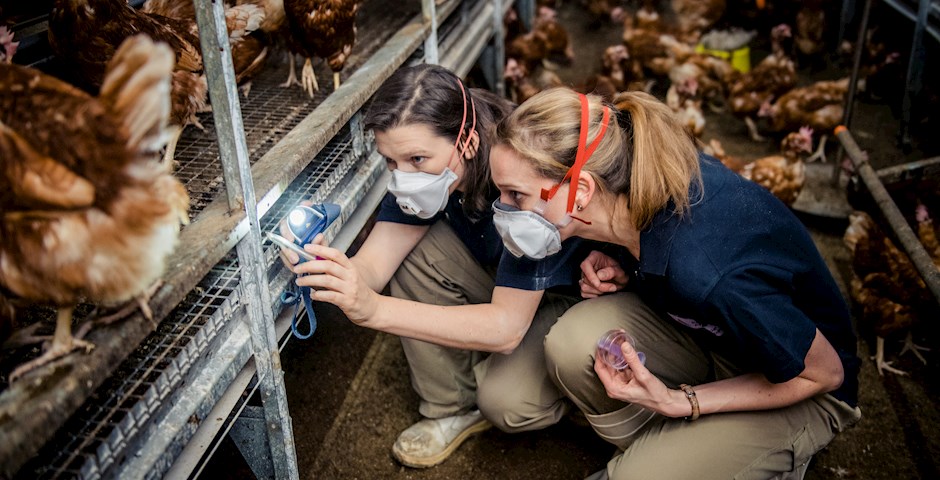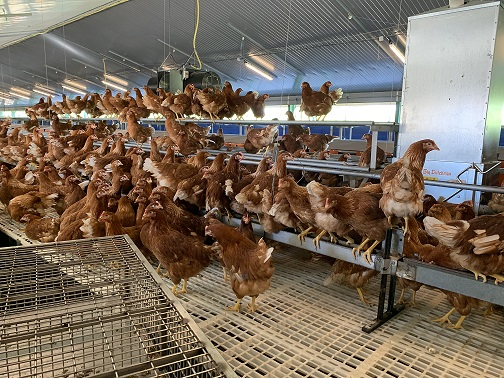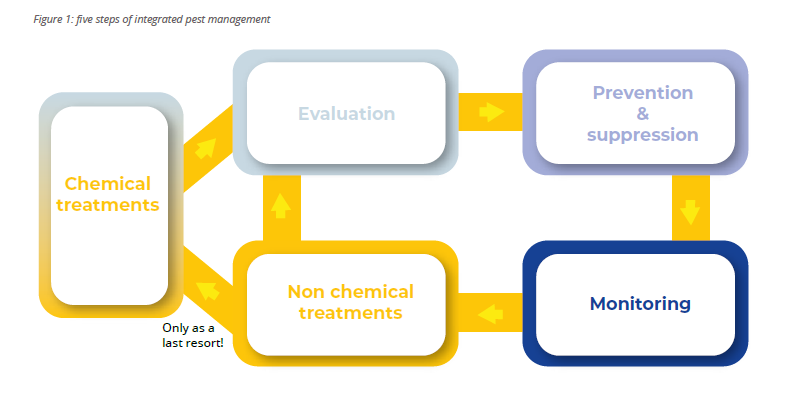
The Chicken or the Egg? How preventive parasite treatment keeps poultry healthy

What is the context behind the project?
Parasites, such as poultry red mites, are very common in egg production. They have an impact on animal health and welfare and affect their productivity, which is economically damageable for farmers: Over 100 million euros are lost annually. Every day, eggs go into food production and the higher the parasite infestation rate is, the higher the risk of animals transmitting diseases such as salmonella. Ultimately this means less money for farmers.
Which challenge is the MiteControl project tackling?
Poultry red mites are difficult to control as they are hidden from sight and evolve in the environment rather than living on hens. Like mosquitoes, they only come out at night to take a blood meal. The first stages of infestation are thus hard to detect and hard to treat as well. Laying hens live in poultry houses for 75 weeks so parasites have over a year to feed and reproduce themselves. Until now, few solutions have been certified and toxic substances such as insecticides have been used under the radar with potentially damageable consequences for the environment.
How is your project addressing the issue of poultry red mites?
Since it is very difficult to eradicate poultry red mites, the objective is to lower infestation rates as much as possible. Farmers are used to treating mites only when infection levels are high. They rely on biocides and acaricides which build resistance (as it happens with antibiotics). MiteControl promotes a paradigm shift from cure to prevention thanks to an integrated pest management strategy. Preventive measures include vaccines, cleaning houses prior to the arrival of new hens, introducing predatory mites that kill red mites and using plant or mineral-based products. Those measures work in combination and chemicals are used as a last resort.

MiteControl promotes a paradigm shift from cure to prevention thanks to an integrated pest management strategy.
Nathalie Sleeckx from the Experimental Poultry Centre
What is the added value of transnational cooperation for MiteControl?
We set up 10 pilot farms (4 in France, 4 in the UK and 2 in Belgium), with different types of housing depending on the country (from free range to intensive). This provided partners with the opportunity to discuss experiments and learn from each other. Thanks to an early warning system, farmers can gather data on hens’ night behaviour through an app. Monitoring infestation level is key to control parasites, but it is time-consuming to do manually, hence the usefulness of smart digital farming developed by the University of Leuven, BE. Monthly visits of researchers and veterinarians allowed for further treatment adjustments.
Why choose to conduct your project with Interreg North-West Europe?
The North-West of Europe is home to many major egg producing and exporter countries including Belgium, France, and the Netherlands. 90% of farmers in the area are faced with red mites (about 40,000). Developing regional solutions therefore made sense, as this part of Europe is very innovative and quite far ahead when it comes to animal welfare and food safety, with high standards of production.

What is the most promising outcome of MiteControl?
The mental shift is what we are most proud of as a partnership. Throughout the course of the project, farmers were made aware of the integrated pest management strategy, could test it in real life conditions and saw the advantages of monitoring infestation levels. Behaviours are changing and farmers are now able to implement this holistic approach autonomously. With the extra time (a year) and money allocated to the project (+ 400,000 euros) in the framework of Interreg NWE’s second call for capitalisation, new partners have joined, including broiler and pullet breeders who sell their animals for meat consumption (chickens) and have a high-value stock. The project is reaching new target groups and its results are being rolled out.

How are farmers - and eventually consumers - benefitting from your project?
We expect to reach 75% of all farmers in North-West Europe by sharing our preventive strategy and its advantages in magazines, through presentations and relying on all partners’ networks for dissemination. Integrated pest management will be included in veterinary curricula, as well as in engineering curricula. Eventually we anticipate 100,000-200,000 animals will benefit from preventive mite treatment. Economically speaking, the healthier the poultry, the more productive they are, and the more profitable for farmers. With less chemicals being used, pesticide residues in food supply decrease which contributes to improving food chain quality and is beneficial for public health. Besides, animal welfare has been a growing concern for European public opinion over the years and MiteControl is helping to meet citizens’ demands.
What are your MiteControl’s expectations for the future?
We wish to standardise our approach to control poultry red mites and to this aim are actively building synergies with researchers throughout Europe (e.g. in Italy, Norway). Among MiteControl’s associated partners are some global companies specialised in animal breeding which can publicise our results worldwide. In the longer term, as backyard hens and chickens also suffer from red mites, we would like to see our findings shared with the general public as more and more households own poultry.
How is your project contributing to making the agrofood sector more sustainable?
We developed a preventive, integrated strategy where chemicals are used more effectively, at a further stage (i.e. a year rather than four months after hens’ arrival) and only when all other solutions have been exhausted. This approach is environmentally friendly as less chemicals end up in manure in comparison to veterinary treatment.
Key project figures
Project partners
7
Participating countries
4
BE, FR, NL, UK
Total budget
€3.4m
